Get the Campgrounds You Want–Your First Choice, Not Your Last
To plan or not to plan? For us, it’s not a question. We plan nearly every trip we take in “Lucky Us,” our 2015.5 Leisure Unity MB, from our annual winter drive to Florida, to a 9,000-mile roundtrip from Michigan to Vancouver Island, Canada.
So, why do we plan? Because we have learned that we better have a plan – and reservations –when taking trips during peak season to popular destinations.
We started plotting our nine-week trek from Michigan to Vancouver Island more than one year in advance, to ensure that we would get campsites at Glacier, Banff and Jasper National Parks in summer, 2018. We’ll share some of our tips and tricks for planning and reserving sites on this, and other trips, along with lessons learned along the way.
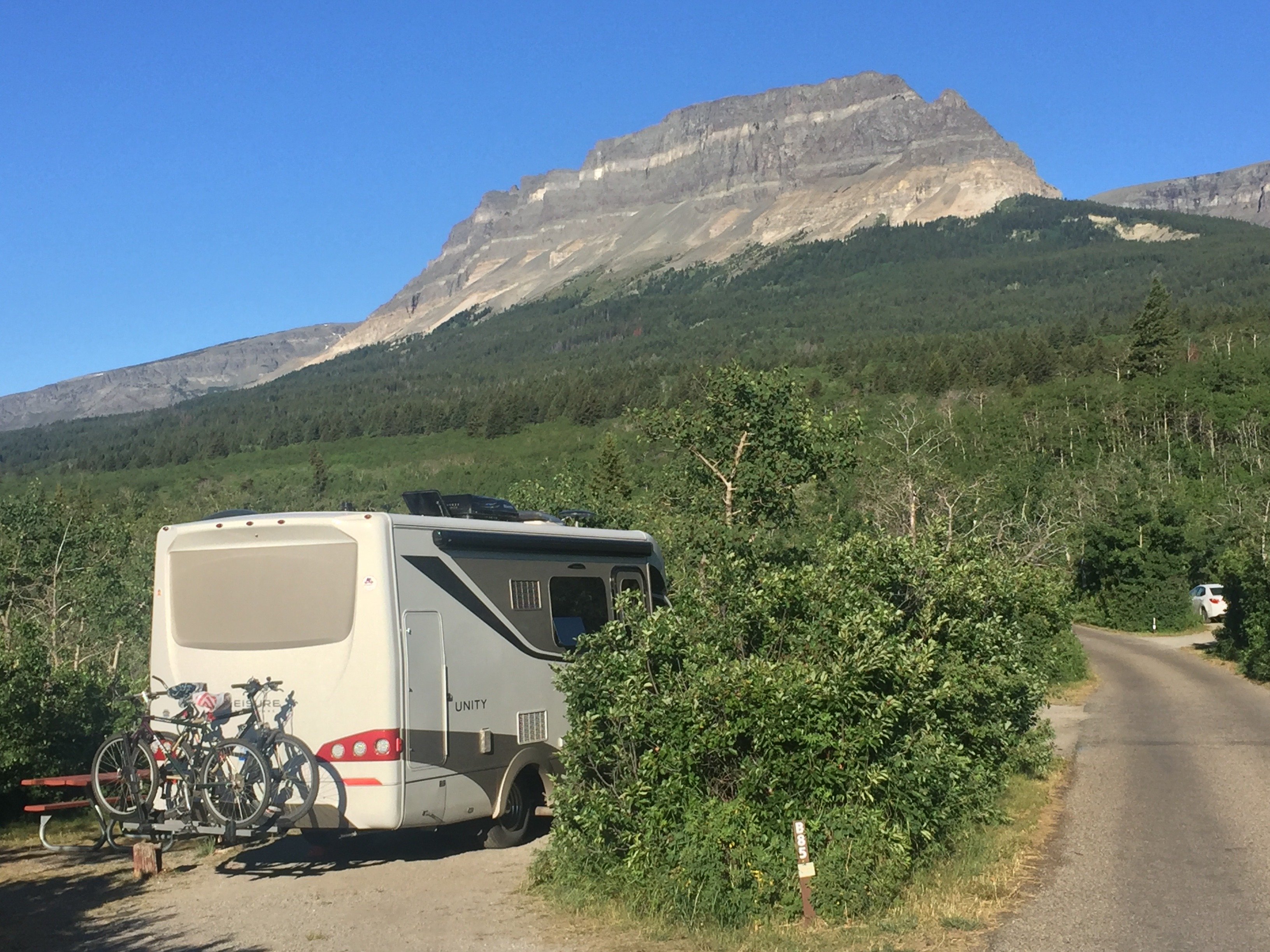
But first, let’s go back, about five years ago, when we planned our first trip to Florida. Assuming that Florida State Parks had the same reservation rules as our native Michigan, we started looking in August, six months before we planned to leave. Wrong! Florida accepts reservations 11 months prior, and all the state parks we wanted to visit were already booked. We managed to get into a few, mostly inland, and kept a few dates available for last-minute reservations. But we were not able to get into our “bucket list” parks. The state parks in the Keys were all booked, and we barely got in at two mega-expensive private campgrounds in Marathon and near Key West. Once in the Keys, we tried, but could not get in, even as a walk-up, for any of the highly sought-after, and much cheaper, state facilities.
And by mega, how about $160 a night for a no-services spot a few feet from another site, including one set of campers that were kicked out for being too loud the first night. Compare that with $35 for a state park site, and you know why they’re highly coveted in the Keys and other destinations.
Our first Florida trip took us on a different route than we had envisioned, but it also provided us opportunities to view manatees at Blue Spring State Park and explore the Atlantic Coast near Jupiter by staying at Jonathan Dickinson State Park. We managed to reserve three nights at Koreshan State Park, on the Gulf Coast but had to move to a different campsite each day. After we got back, we decided to do things differently. Here’s how:
Step One: Start a Document
That’s just me, but it could be you, too. I need to write down when and where we are going. I started out jotting down dates and destinations, and soon turned my narratives into tables to help keep organized. I’ve now developed a six-column table that helps us keep us on track.

Step Two: Pick Major Stops Along the Way
For us, the next step is to make those broad brushstrokes. Where do we want to go? What do we want to see and do along the way? How much time to we have to allow?
Fortunately, Bill has more than 40 years experience as a travel writer, and typically if I mention a destination, he will start naming places to stop along the way. In 2017 he asked me to pick a destination for our first “big trip” in our Unity MB, and I picked Vancouver Island and the City of Victoria.
Bill immediately knew he wanted us to travel to Glacier National Park, head north to Calgary, and then visit Banff and Jasper National Parks. We also contacted Bill’s son, Justin, in California, to determine when we could meet up with his family after we made it to Vancouver Island. Then the detail work began.
We needed to leave Michigan no sooner than July 12, travel west to Glacier National Park, turn north to the Canadian Rockies to visit western Canada’s top national parks, then head southwest to Vancouver, and then south along the Pacific Coast to meet up with Justin’s family on August 12 at Jedediah Smith Redwoods State Park. Where did our ideas go? On our planning document.
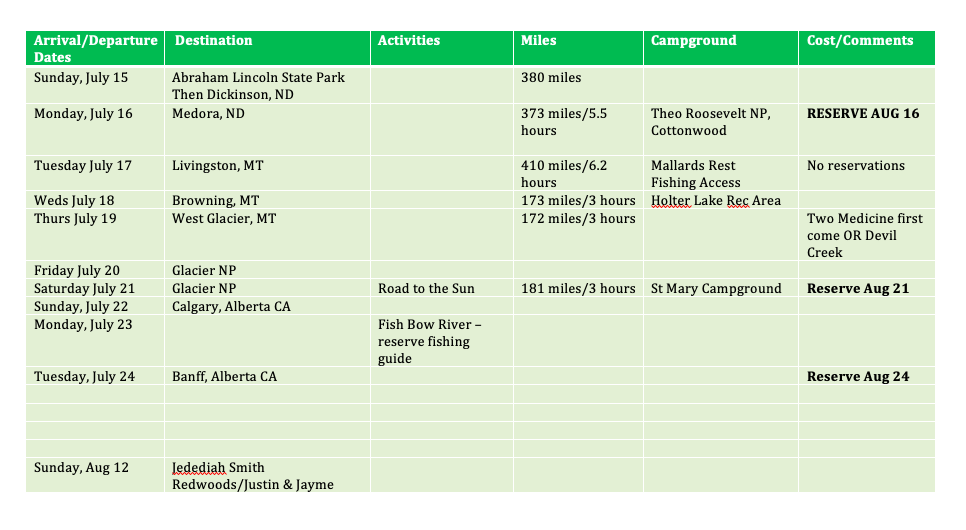
Step Three: Research, Research, Research
They say the devil is in the details, and now it was time to get to work. Every night we brought out our computers and iPad, with Bill using his AllStays app to search campgrounds, and me using Google Maps to plot the route. We added dates, destinations, miles and driving hours to the spreadsheet, along with notes on how many days we want to spend at a location with places to see or things to do. We only did this for about an hour or so each night so we didn’t get overwhelmed. You may also find trip planning websites, like Roadtrippers helpful.
One of the first destinations was Glacier National Park, where we wanted to drive the Going to the Sun Highway. Another was Calgary, where Bill wanted to fish the Bow River; he needed to book a fishing guide several months out, plus we needed to find a campground within an easy drive to where we’d meet our guide. We also needed to book a ferry to Vancouver Island, stay there five days, and then book another ferry to Washington State to begin our trek down the Pacific Coast to meet family.
Once we had a sense of how long it would take us to go to Vancouver Island, we gave ourselves one week to travel down the Pacific Coast before meeting up with family in California. We researched Canada’s reservation system, including its national and provincial parks in British Columbia and Saskatchewan. We also researched the reservation guidelines for Washington, Oregon and California state parks, and one or two county parks. We already knew the rules for national parks in the United States. We added the earliest dates to reserve campsites on our spreadsheet.
Planning Your Trip, Step Four: Make Reservations
Each night we looked at campgrounds and made reservations. Glacier National Park was filling up already–we were behind the eight ball now and reminded ourselves that we were booking a tremendously popular park in late July. Next, making reservations at the Canadian Rockies, including Banff, Calgary, Lake Louise and Jasper National Park.
We worked on our trip planning a few nights each week, keeping up as best we could as reservation dates became available. We were already too late for several Oregon State Parks along the Pacific Coast but managed to find others.
We coordinated our combined vacation with Justin and his family, giving us nearly one week to enjoy our grandkids. Once we made those last reservations we stopped reserving sites, as we knew it would be late August and we would be traveling to fishing access spots in Idaho before going to Denver to visit my son John.
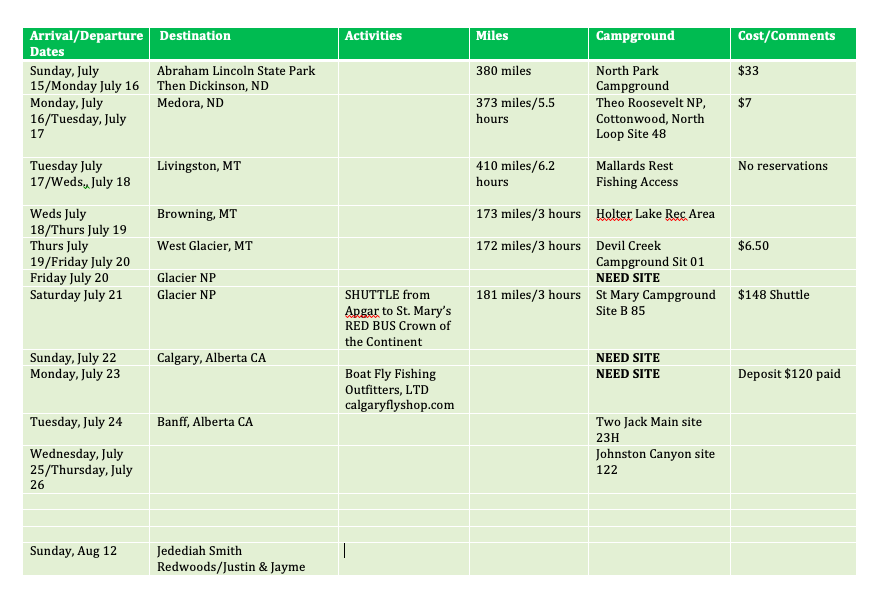
Step Five: Tweaking The Plan
As our trip grew closer, we made changes as necessary. More family members decided to join us in California, and we planned another fishing trip. Yeah, it sounds like a lot of work. It was, but, it both lent an air of anticipation, and that we were getting closer to our goal–turning the key in our LTV.
Our Tips on Planning Trips
Know the Rules for Reserving
Don’t assume that every state or county has the same reservation window as your home state. Do your homework early and know the rules well in advance.
Know the Exact Time and Be Ready
Get a time calibrator app, log in to the appropriate reservation website, have your campsite selected, watch the second hand on your clock and be ready to hit the “reserve” button one or two seconds before sites open up. Have multiple computers doing the same thing.
Expect to Make Mistakes
Through trial – and error – we’ve realized how easy it is to mix up when reserving a campsite (are we leaving that day or staying that night?). We also thought we had a reservation, when in fact, we didn’t. Now, once we make a reservation the site number is recorded on our spreadsheet, along with the reservation confirmation number. Yep, we still forget to add in details, and end up looking for emails to confirm that we did make that reservation. I try to put follow-up tasks in bold.
Expect the Unexpected
A few months before our trip to Vancouver Island, we discovered a new glitch: A post on Facebook’s Leisure Travel Van Enthusiasts Facebook page mentioned that vehicles longer than 21 feet are not allowed on Glacier National Park’s Going to the Sun Road. Now we had an issue: we had reserved campsites going to the west side of the park so we could then drive east on the scenic road to St. Mary’s. We had to cancel our reservations going west and make new reservations on the east side of the park. Try as we might, day after day, we were unable to secure a site at St. Mary campground. We did find a site at a private campground, within driving distance to the park. One of the restrooms was not working, the sites were less than desirable, and it cost more than the campground in Glacier, but at least we had a place to stay.
After visiting Vancouver Island, we planned to spend two nights at Sol Duc Hot Springs Resort Campground at Olympic National Park. Once we arrived, we knew we chose the wrong place, as its “RV park” was not much more than a parking lot, and was waaay too far from the sights we wanted to see. We were relieved to find another place closer to the coast.
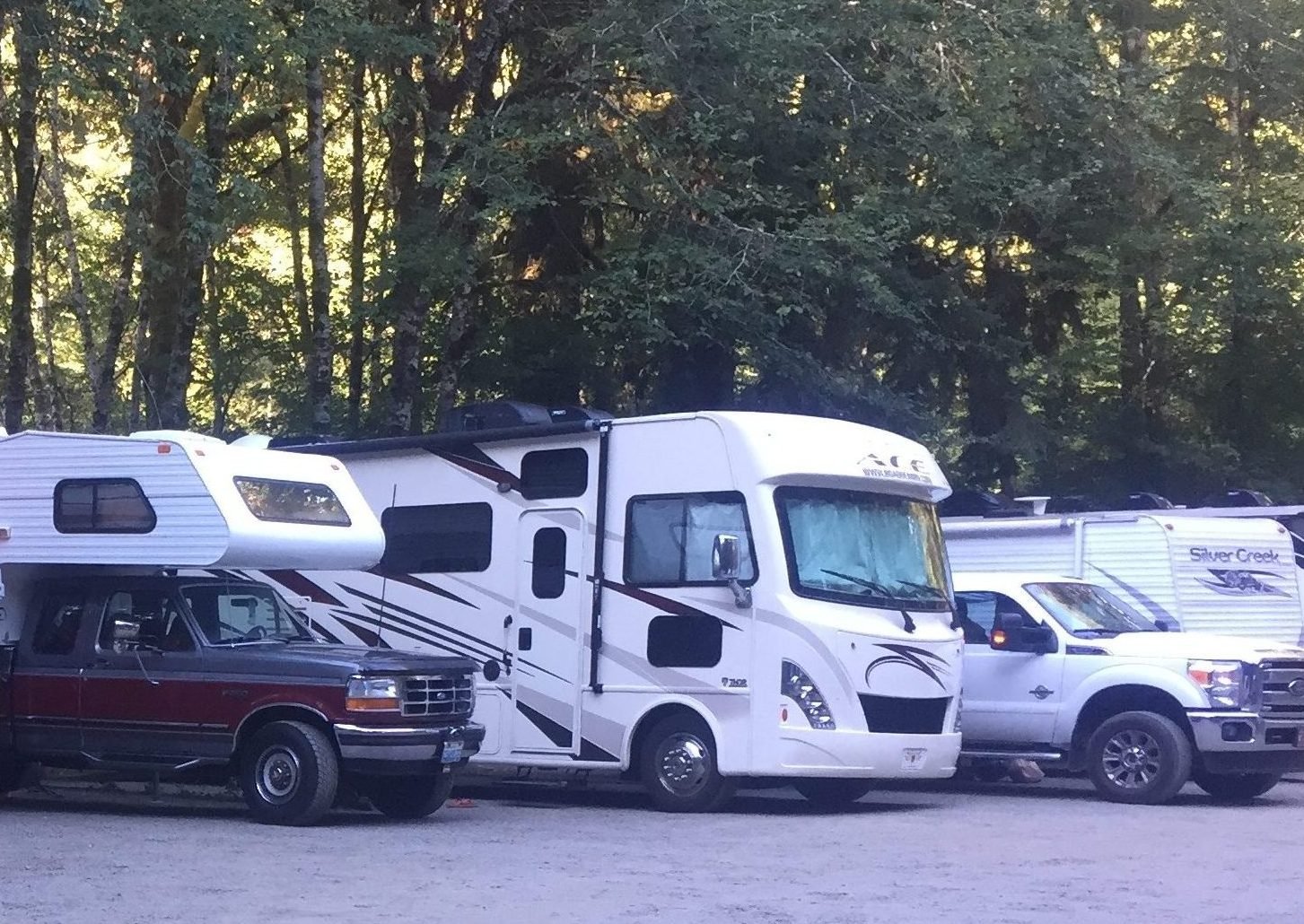
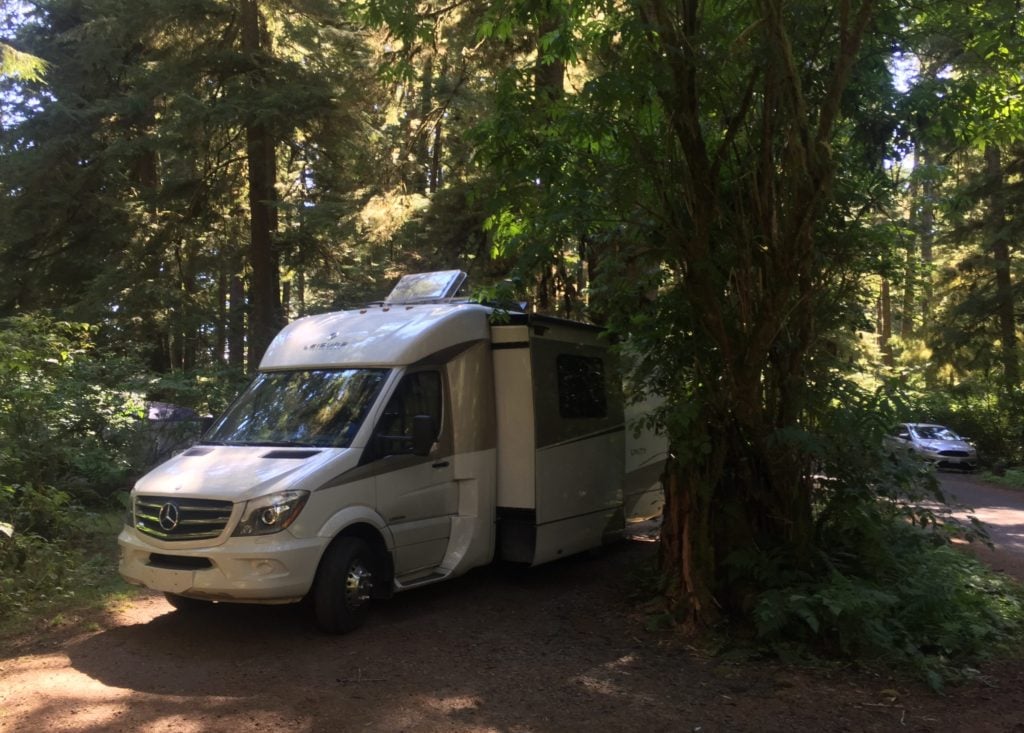
Keep a paper copy of your itinerary
We are often in areas with no cell service and a paper copy helps us remember where we are going. I also send a copy of our itinerary to our emails, so we can access it, and also send a copy to our families so they knew when we are “off the grid.”
Buy Specialty Items, Like Ferry Tickets, In Advance
Our nine-week trip to Vancouver Island included reserving a spot on a ferry from Vancouver to Vancouver Island, and then from Vancouver Island to Washington. Once we started to look at reservations, we soon realized that the ferry route and times we wanted were already booked for passengers with a vehicle our size. We had to choose a different route, which cost more and took us to an out-of-the-way landing on the island, giving us a much longer day, and a longer trip to our campground. Our advice? Buy special items, like tickets on a ferry, well in advance.
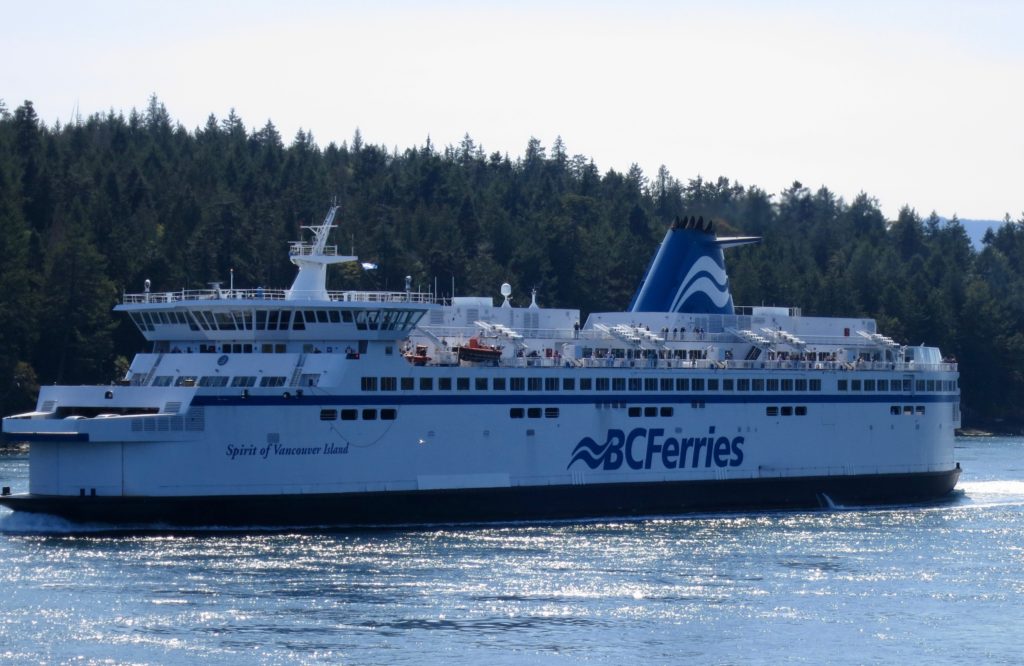
Update, Update, Update
Once our trip is underway, I update our itinerary, adding wildlife we saw and interesting stops along the way. We keep our notes for future reference. Read our next blogs to discover what we did – and saw – on our latest trip to Vancouver Island, in between, and beyond!


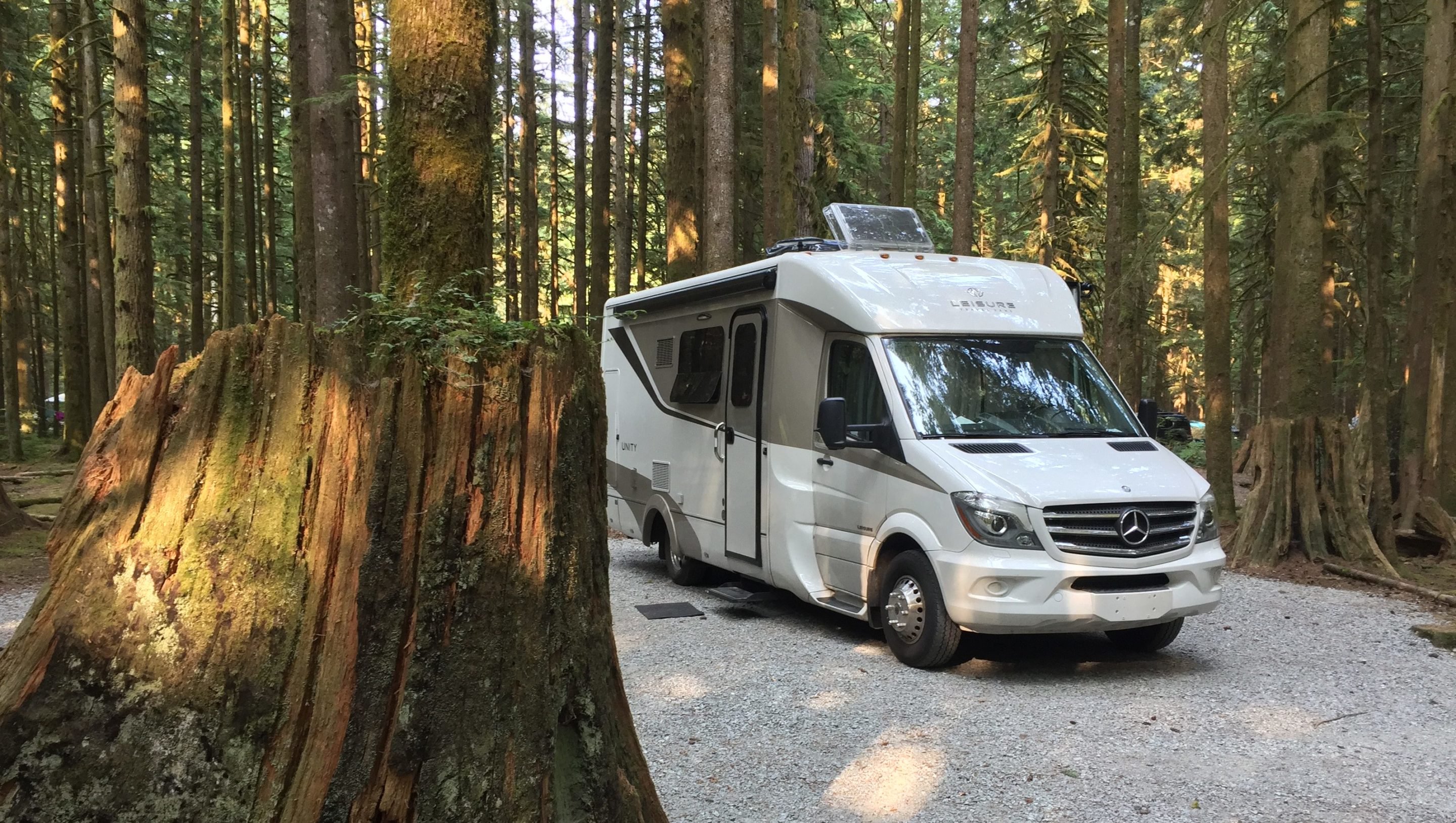
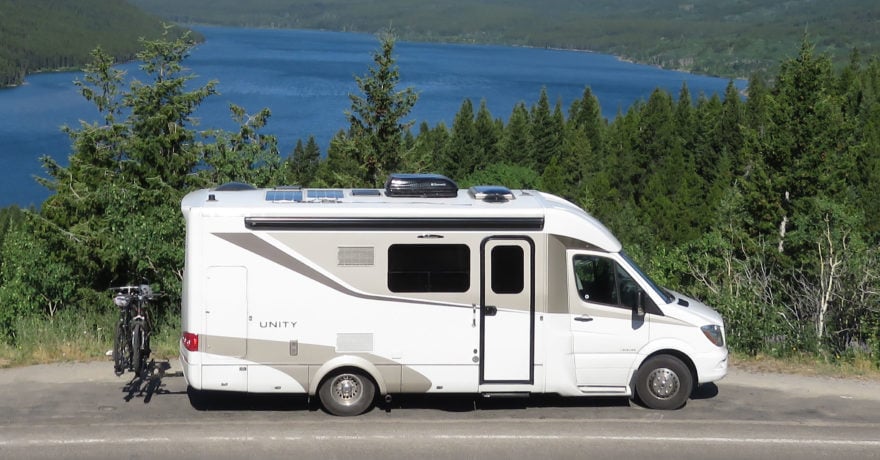
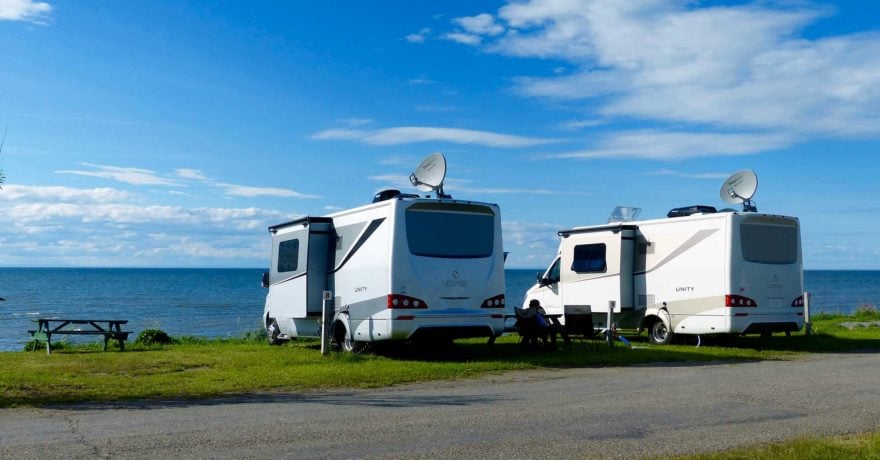
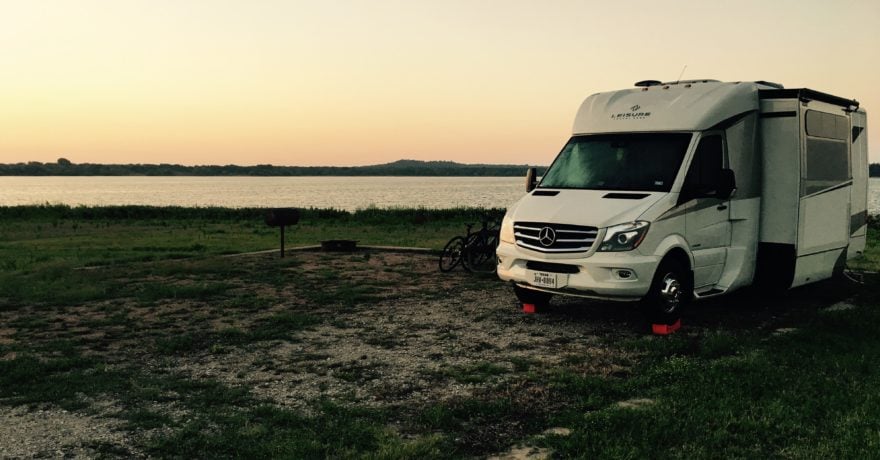
Comments